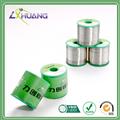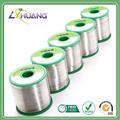Product
Lead Free Solder
High Temperature Alloy Solder
Medium High Temperature Alloy Solder
Medium temperature Solder Alloy
Low Mid temperature Alloy Solder
Low Temperature Alloy Solder
Lead Solder
Sn Pb Tin Lead Solder Wire and Solder Bar
Sn Pb Bi Tin Lead Bismuth Solder Wire and Solder Bar
Sn Pb Ag Tin Lead Silver Solder Wire and Solder Bar
Aluminum Welding Solder
Solder for Copper Aluminum Pipe
Copper to Aluminum Solder
Aluminum to Aluminum Solder
Aluminum To Aluminum Soldering Ring
Aluminum Welding Wire
Electronic Chemicals
Cleaning Solvent for Soldering
Lead Free Water Soluble Soldering Flux
Lead Free Soldering Flux
Tin Coating Soldering Flux
Tin lead Soldering Flux
Thinner
Others
BGA Solder Ball
Solder Iron Tip Tinner
Soldering Wire Tube




